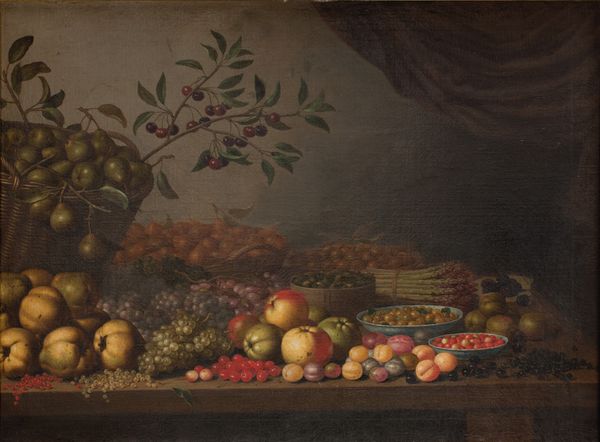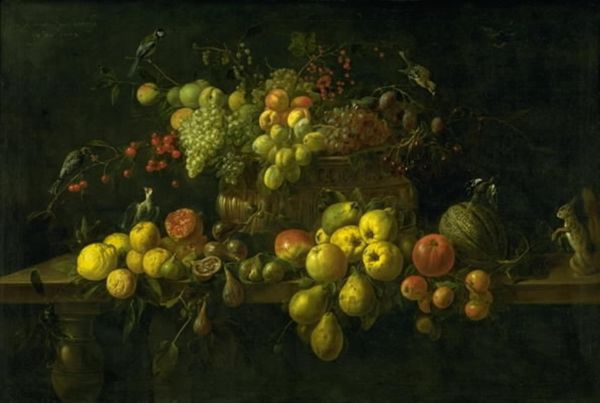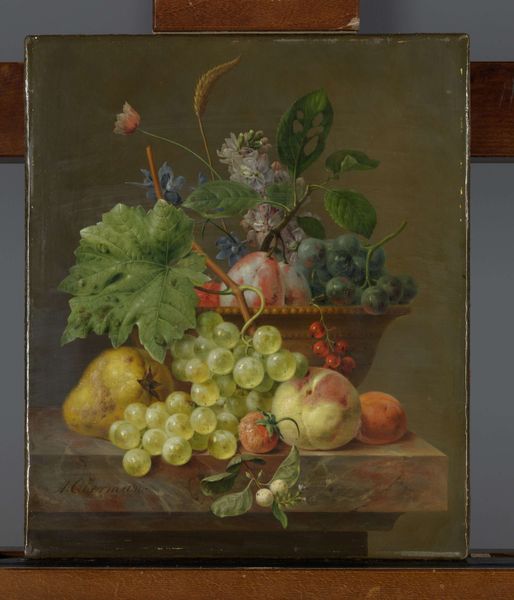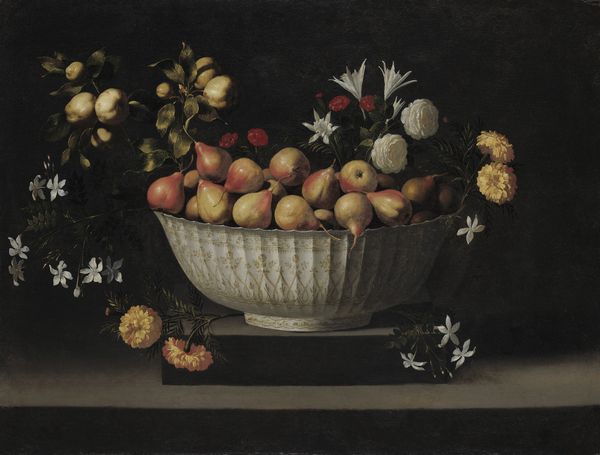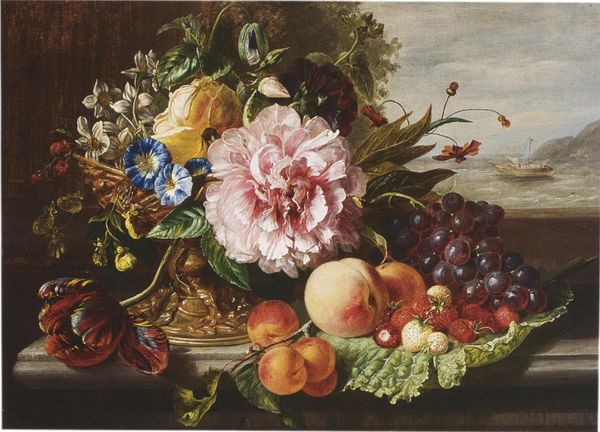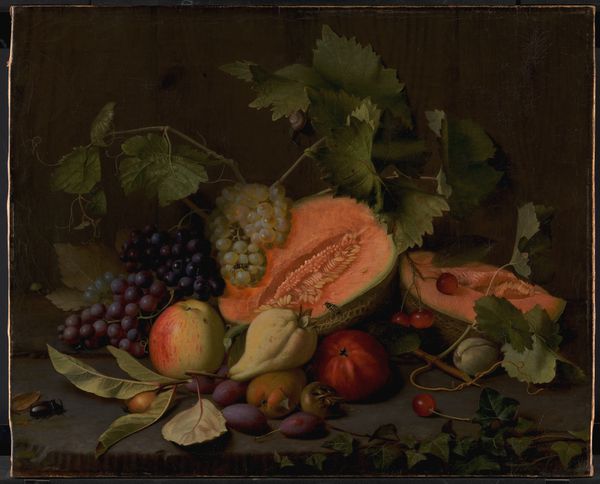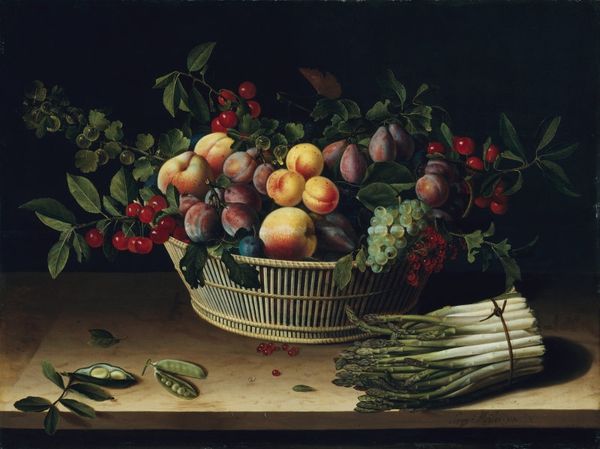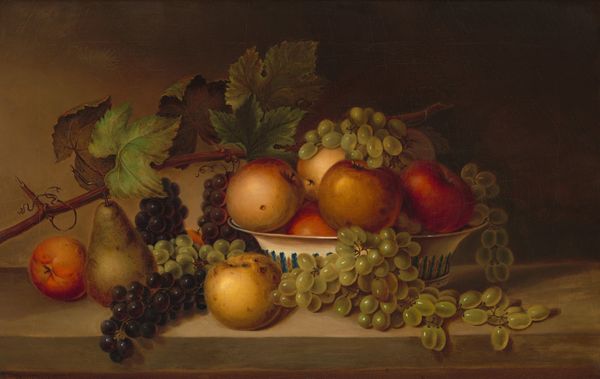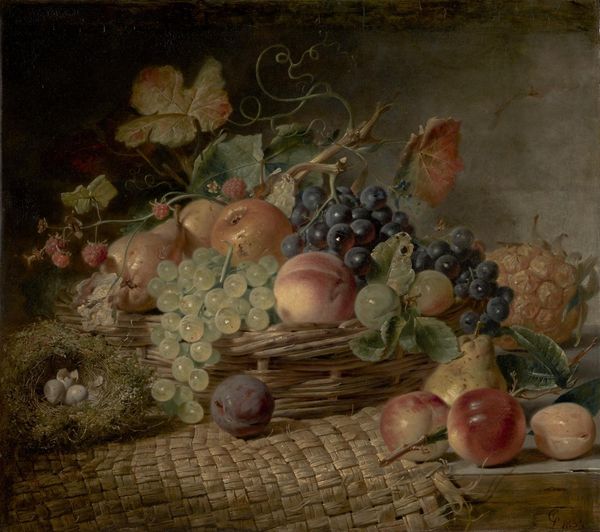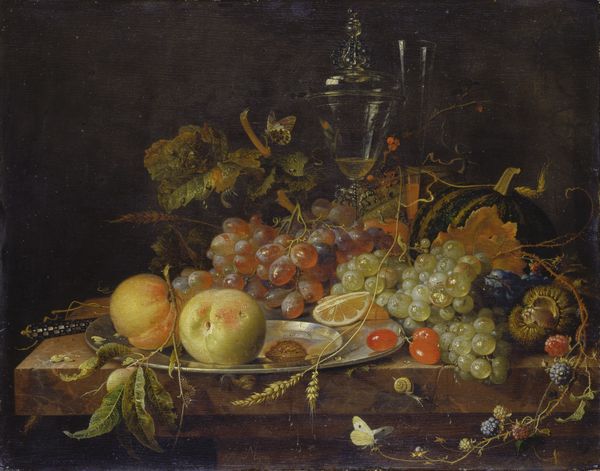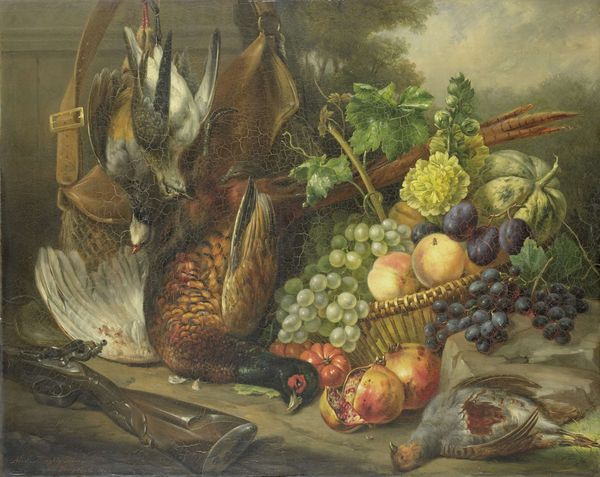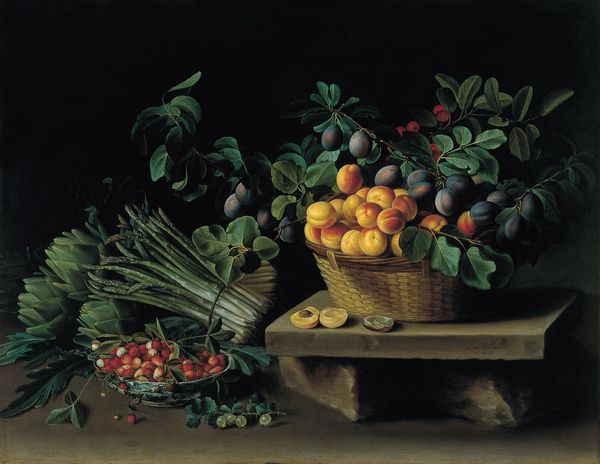
oil-paint
#
baroque
#
oil-paint
#
oil painting
Dimensions: painted surface: 18.1 x 22.8 cm (7 1/8 x 9 in.) overall (with additions): 18.8 x 23.5 cm (7 3/8 x 9 1/4 in.) framed: 38.4 x 43.8 x 3.2 cm (15 1/8 x 17 1/4 x 1 1/4 in.)
Copyright: National Gallery of Art: CC0 1.0
Editor: Here we have "Basket of Fruits" from around 1622, an oil painting by Balthasar van der Ast. I'm struck by the contrast between the neat arrangement within the basket and the more scattered fruit on the table. What do you see when you look at this still life? Curator: I observe a carefully constructed composition based on a pyramidal structure. The basket anchors the base, directing the eye upward through the variety of textures, forms and subtle shifts of color of the arrangement. Do you notice the almost geometric progression from large fruits at the base to the finer detail in the upper regions? Editor: Yes, I see how the composition moves the eye. And I also see a visual dialogue between the hard, reflective surfaces and the soft, yielding textures of the fruit itself. The porcelain dish also introduces an interesting line. Is it there just to add geometric flair, or does it have other role? Curator: I suggest you consider that Van der Ast may employ that dish to further highlight the transience of the fruit itself. The permanence of the object only enhances what cannot last. Do you agree? Editor: That’s a fascinating observation, yes. It makes me consider how even still lifes like this can be so carefully composed to communicate a particular idea, that of 'vanitas'. I originally assumed the appeal lay in the beauty of everyday objects alone. Curator: Precisely. Analyzing the forms, lines and juxtapositions illuminates an entirely new perspective. Hopefully, close looking has broadened your interpretation of Van der Ast's Basket of Fruits. Editor: It definitely has. I appreciate the way you connected those compositional elements to the broader theme.
